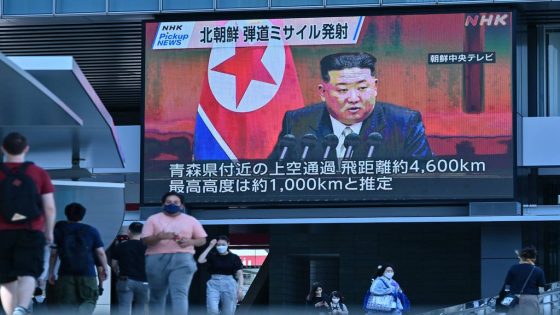North Korean unmanned aerial vehicles that closely resemble sophisticated American drones are a sign the despotic regime is seeking to modernize its military beyond attention-grabbing missiles, according to a U.S. military leader.
Pyongyang last year unveiled combat and intelligence-gathering UAVs that appear strikingly similar to a General Atomics MQ-9 Reaper and a larger Northrop Grumman RQ-4 Global Hawk. Images of them surfaced following an arms exhibit in the capital city attended by the country’s leader, Kim Jong Un, and visiting Russian defense chief Sergei Shoigu.
Navy Adm. John Aquilino, leader of U.S. forces in the Indo-Pacific, on March 20 told Congress that North Korea is focused on developing “technology and weapons” that advance its nuclear and nonnuclear capabilities. The admiral’s remit at Indo-Pacific Command includes North Korea and nearby China — two premier national-security hazards.
“Over the past three years, the [Democratic People’s Republic of Korea] has primarily focused its military modernization efforts on strategic capabilities,” Aquilino said in written testimony submitted to the House Armed Services Committee. “Modernization of the DPRK’s vast conventional force has been slower in comparison but progressing nonetheless. Ballistic missile submarines, associated SLBMs, and unmanned aerial vehicles closely resembling U.S. systems highlight recent developments.”
Militaries and militant groups the world over are increasingly deploying drones and other uncrewed technologies to collect intelligence, assist targeting and attack from greater distances. Their battlefield flexibility has been underscored by the Russia-Ukraine war and Houthi harassment in the Red Sea and Gulf of Aden.
The quality and efficacy of North Korea’s lookalike drones is unclear.
At the time of their unveiling, Joseph Dempsey, a research associate for defense and military analysis at the International Institute for Strategic Studies, said the platforms “are very unlikely to deliver similar levels of flight performance to the U.S. systems, particularly in terms of endurance.”
North Korean drones have in the past crossed into South Korea, prompting a military response.
Colin Demarest is a reporter at C4ISRNET, where he covers military networks, cyber and IT. Colin previously covered the Department of Energy and its National Nuclear Security Administration — namely Cold War cleanup and nuclear weapons development — for a daily newspaper in South Carolina. Colin is also an award-winning photographer.
Source Agencies


